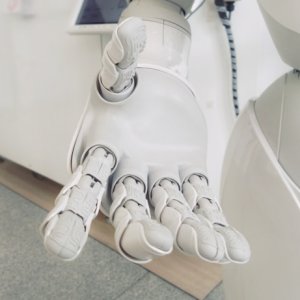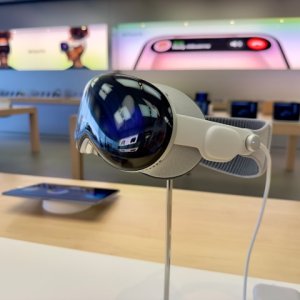Interconnected Digital Systems Reduce Expenditure, Inequality

STORY INLINE POST
Q: How is Dell Technologies making the concept of a digital city a reality for Latin American countries?
A: In Latin America, we work according to the digital agenda laid out by public policies. A digital city rests on different pillars, among them health, education and security. The goal is to make these available to every citizen. In health, this would mean universal access. For citizens, apps are the easiest way to access digital services and we need to start mapping cities’ needs to develop key verticals for digitalization. In healthcare, for instance, telemedicine is one of the verticals. This has involved the integration of an additional app to manage patients’ Electronic Clinical Records (ECR) and access digitized studies. With these actions, we are empowering citizens with their own data and also, interconnecting healthcare services from diverse provider entities.
Q: How has Dell Technologies worked to implement a digital agenda in Mexico?
A: We have worked on the development of hospital interconnection for a Public Health Institutions in Mexico and patient registration. Moreover, we have developed Efficient Consumer Response and worked with state governments to develop diverse projects for public health institutions for projects on telediagnostics, teleradiology and telemedicine. To build this solutions, Dell Technologies works with different segments of the sector to fit all the puzzle pieces and create the best solutions for the health system in Mexico. In addition, I would highlight that rural zones are also a concern and priority for us. We have worked on projects that drive telemedicine access in different Mexican States.
Q: In Mexico, how has Dell Technologies worked to connect the fragmented Mexican health system?
A: Dell Technologies has mainly worked with Government Resource Planning (GRP) on projects for a government management system that allows for interoperability among many segments. In Mexico, there has not yet been a project to interconnect the health system. However, we have worked on the management and interconnectivity of different public health institutions.
One example of a complete interconnected health system can be seen in our project with the government of the Dominican Republic. We are developing a GRP platform to interconnect the country’s entire health system. We are working with the governments of Brazil and Colombia on similar platforms.
Q: How could smart cities be a tool to foresee and prevent threatening events?
A: One example is what Dell Technologies is doing with the government of Brazil. When a positive PCR COVID-19 test is registered, we send alerts and recommendations to the user. We can even send out a kit for the person with essential tools to measure vital signs, such as an oximeter and a thermometer. The user can register vital signs on the platform if their mobile device is not able to do it by itself. If the user registers low oxygenation levels, an ambulance is sent to the location. This initiative has been of great help in reducing the burden on hospitals by keeping patients at home when possible.
Q: How could digital cities improve people’s daily lives?
A: A digital city includes the network around the citizen, which involves an entire management platform to connect people with services like transportation, education, security, health and innovation. All these are also interconnected, and this allows diverse responses if needed. So, for example, if there is a fire at your home, the alarm system responds by sending firefighters and an ambulance. Also, through AI, we have been able to detect scenarios like a person fainting on the subway. Through the system, a bystander is able to send an alert that will trigger actions from all the interconnected services.
Q: Considering the large inequality gaps in Mexico, how is digitalization a response to the lack of health access?
A: Our work with remote communities began years ago. One of the first programs we carried out was with Casa de la Amistad, a foundation focused on children with cancer. We introduced rural telemedicine using pictures of the children’s ailments to ensure early cancer detection. We were able to implement telemedicine centers where an oncologist could treat children by using a computer. The consultation was supported by a general doctor and the child’s parents. As this was implemented in rural areas with no internet, we used satellite connection.
Michael Dell, the founder of our company, is passionate about healthcare. Therefore, Dell supports these projects regardless of the technological barriers we face. We are convinced that technology is the solution for equity and equality in healthcare in Mexico and we are looking forward to continue empowering each patient. For this reason, Dell Technologies is a complete digital provider, from the devices to the development of a complete digital city or system.
Q: What do you consider the main obstacles toward digital transformation?
A: I think resistance to change has been the main obstacle. For Dell Technologies to transform a general hospital in Mexico, it has to approach actors at different levels of the hospital. We need to transmit that the solutions are created to simplify their process, while also listening to their feedback to create products that really support their practice. As we begin working together and materializing their comments, the work gets easier as employees see the results. Digitalization has been extremely helpful in pharmacy prescription, for instance, as medicine approvals and quantities can be calculated based on the patient ECR. Doctors are able to approve prescriptions by phone without the need for either the patient or the doctor to go to the hospital.
Promoting our success stories is a priority for Dell Technologies. This allows governments or companies to see the impact that their investment in technology can have after a period of time. Especially during COVID-19, we have had positive results with our technological solutions by reducing the burden on hospitals. It is important to present these results to decision-makers. At this moment, they are being challenged to make the smartest investment to improve health systems, so it is up to us to take our solutions and impact to them. Investment, effectiveness and impact will determine the decision and Dell Technologies can offer the cost-effective options they need.
One benefit of Dell is that we offer project flexibility. We work with a subscription-based monthly payment model because we know large investments are hard to do initially.
Q: Mexico is among the main targets for cyberattacks globally, with victims ranging from companies to the government. How does Dell Technologies protect its solutions?
A: The largest number of cyberattacks happen at the endpoint of the chain, in this case patients. It is important then to secure the place where cyberattacks happen the most. We encrypt the data from one end to the other. If a patient’s computer is hacked, the data found will not make sense to the hacker.
Q: What is a good starting point for Mexico to begin its digital transformation in healthcare?
A: The key is to begin with a simple project; for example, the automation of primary consultations for simple ailments. This can derive from ECRs and digital prescriptions.
Dell Technologies provides the essential infrastructure for organizations to build their digital future, transform IT and protect information. The company provides a series of solutions that collect and analyze data in real time to support hospitals, doctors and patients.








 By Miriam Bello | Senior Journalist and Industry Analyst -
Fri, 03/05/2021 - 12:37
By Miriam Bello | Senior Journalist and Industry Analyst -
Fri, 03/05/2021 - 12:37
















